Art World
We Published More Than 2,000 Stories This Year. Here Are 20 of Our Favorites
We take a look back at some of the most serious, most joyful, and most exciting stories of 2018 with a selection of staff favorites.

We take a look back at some of the most serious, most joyful, and most exciting stories of 2018 with a selection of staff favorites.

Artnet News

Where to begin? This year, artnet News published stories on everything from the eclectic art collection of Robin Williams to the rediscovery of a painting by Renaissance master Andrea Mantegna. Some of these have been hugely popular (make sure to check out our list of most-read stories of 2018). Then there are the staff favorites, the stories we’re especially proud of, and the ones we most enjoyed reporting and writing. Below is a selection of 20 of those items to catch up on during your holiday break.
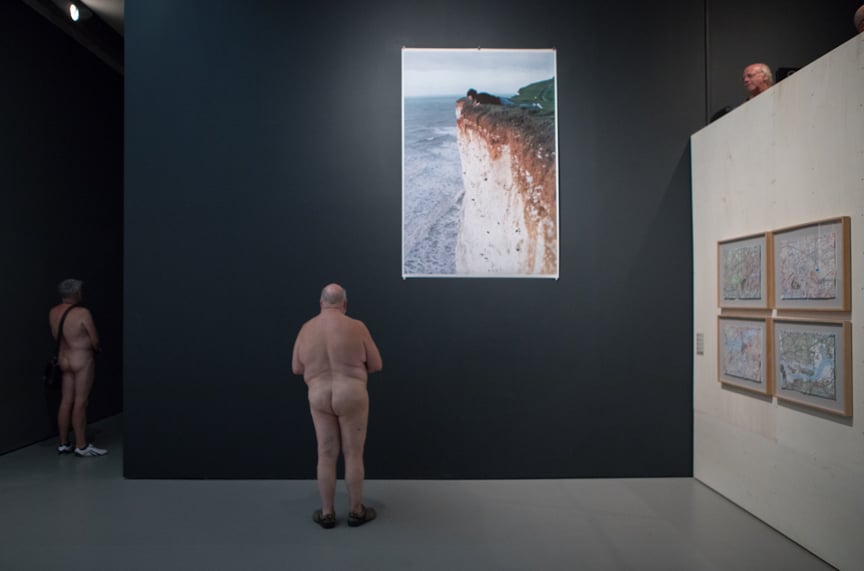
Photo by David Owens for artnet News.
artnet News’s intrepid UK reporter goes… what’s the opposite of undercover?… with a subculture of people who love to look at art while nude, and finds it to be an enlightening experience.
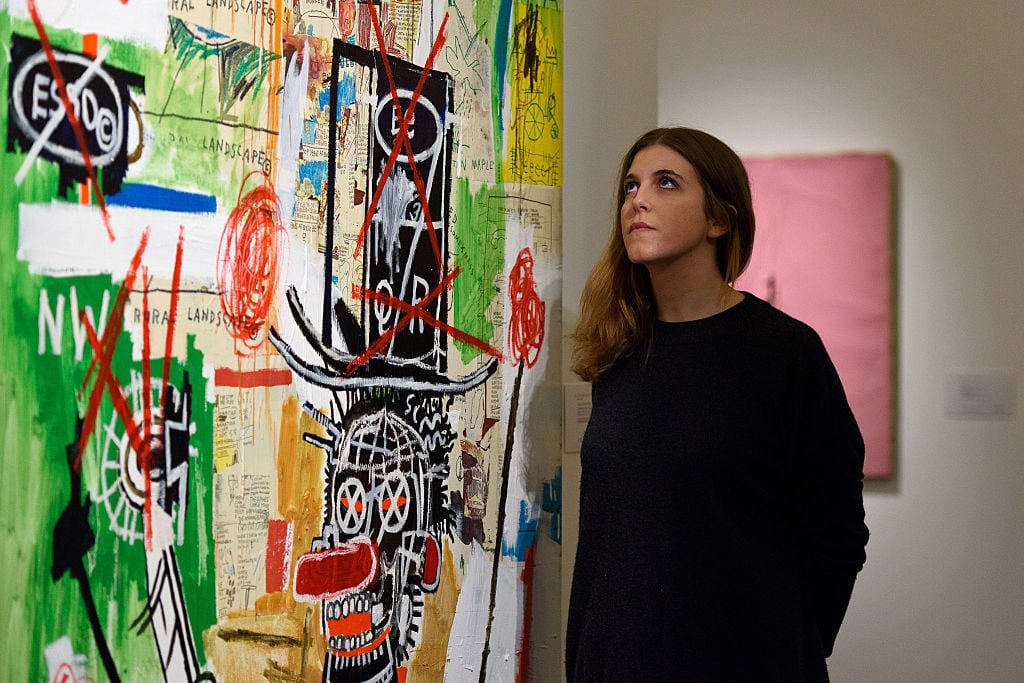
A gallery assistant views Despues De Un Puno by Jean Michael Basquiat at Sotheby’s. Photo by Ben Pruchnie/Getty Images.
It’s always gratifying when the work we do changes minds. In this case, we picked up on a very specific trend in auction preview photography that you’ll never be able to ignore now—even as the practice is fading, in part due to this story.
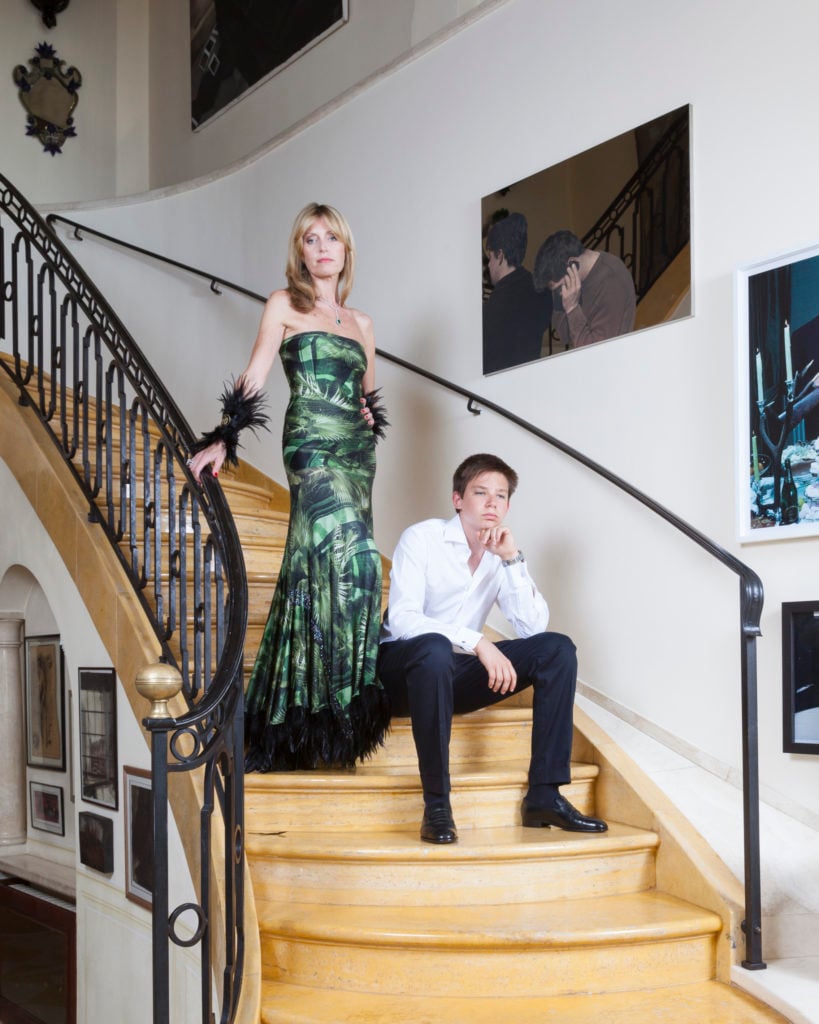
The Beretta family at their home in Brescia, Italy. © Dominik Gigler. Image courtesy of Dominik Gigler Fotografie.
As the art world ramps up scrutiny of the sometimes dark sources of institutional funding—from the Sackler family’s opioid wealth to a Whitney Museum board member’s ties to a tear-gas manufacturer—few people in the US knew about the first family of Italian arms manufacturing, the Berettas—who are also supporters of the Venice Biennale.

A firefighter combating the Northern California wildfires. Photo courtesy of the Bureau of Land Management.
One year later, we revisited the artists who lost everything in Northern California’s 2017 wildfires. Many of them have begun to rebuild—and have started to turn the ashes of their former lives into new works of art.
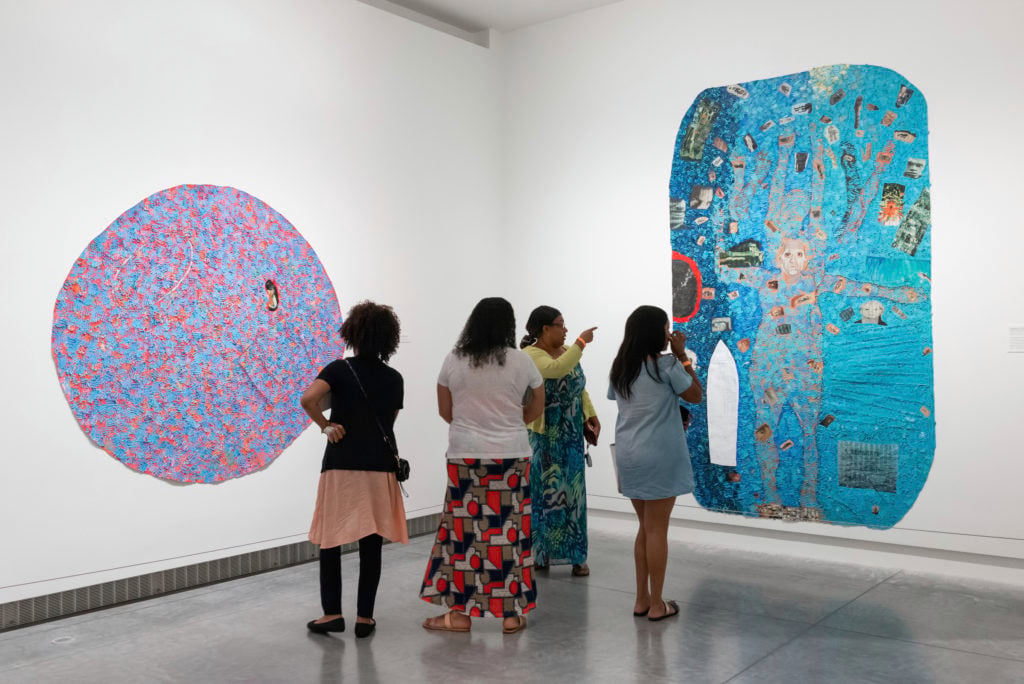
Installation view of “Howardena Pindell: What Remains To Be Seen” at the Virginia Museum of Fine Arts. Photo: David Stover © Virginia Museum of Fine Arts.
We teamed up with In Other Words to examine how museums have integrated work by African American artists over the past decade. Three months, dozens of spreadsheets, and thousands of data points later, we found progress was extremely recent—and more limited than is popularly believed. For more from this project, see our examination of the market; case studies on artists from three different generations; visualizations of our findings; and our methodology.
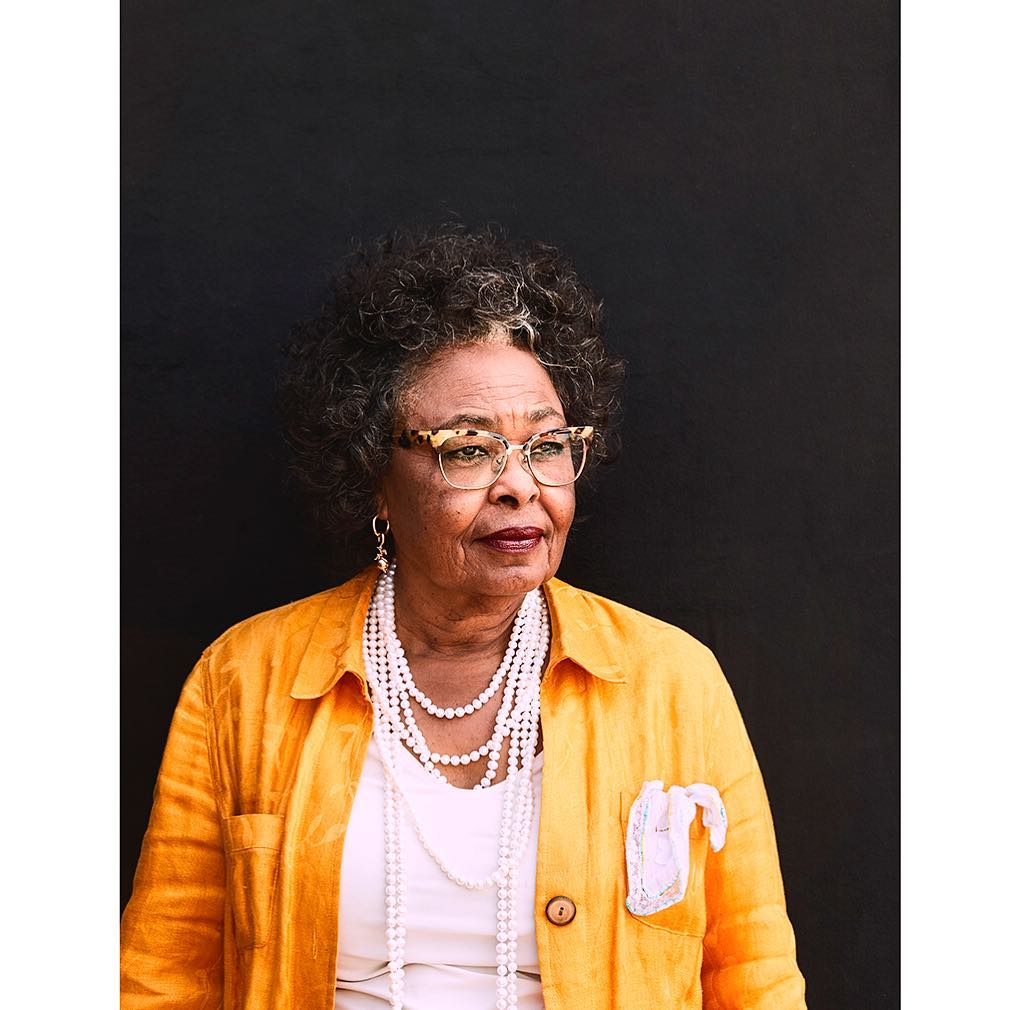
Rosie Lee Hooks, director of the Watts Towers Arts Center. Photo: © 2018 Sam Frost.
Most of the drama of running an art institution happens under the radar, at smaller, local institutions caught between the pressures of donors, the government, and their constituents. This story traces the suspension and reinstatement of Rosie Lee Hooks, the longtime director of the Watts Towers Arts Center—and how her story reveals deeper divisions in the city’s art world.

A screenshot from the Frieze South Bronx document.
Overlooked in January as the art world emerged from holiday hibernation was an audacious (and eventually shelved) proposal by Frieze to establish a “new model for housing and development that creates a permanent home for galleries, artists, and cultural institutions”—one that would have covered 280 acres (!) of the Bronx’s Port Morris district, which is part of one of New York City’s most impoverished communities.

Totem poles stand in Vancouver, British Columbia, Canada. Photo by Robert Giroux/Getty Images.
artnet News’s Berlin contingent spotlights an elegant solution for facilitating the repatriation of Indigenous works of art in Canada. To boot, the piece received compliments from the office of Canada’s beloved prime minister Justin Trudeau!
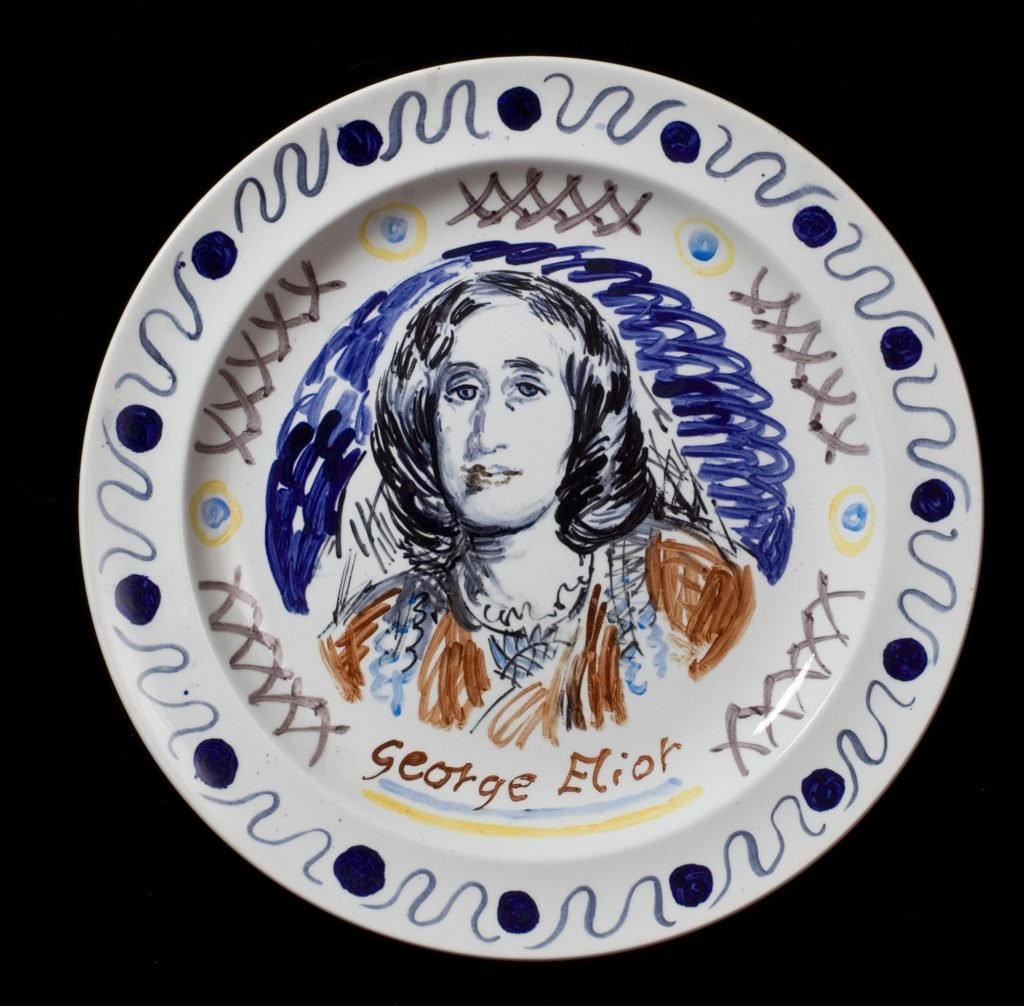
Vanessa Bell and Duncan Grant, The Famous Women Dinner Service, George Eliot (c. 1932–34). Photo courtesy Piano Nobile/Robert Travers Works of Art Limited.
Shown publicly for the first time ever at London’s Piano Nobile gallery, The Famous Women Dinner Service is a proto-feminist masterpiece from 1932–34 depicting 50 important women, historic and contemporary, on a set of ceramic dishes. Delving into the history of this great work of art, once considered lost, artnet News discovered that the artistic partnership between its creators, Vanessa Bell and Duncan Grant, was perhaps even more fascinating than the Dinner Service itself.
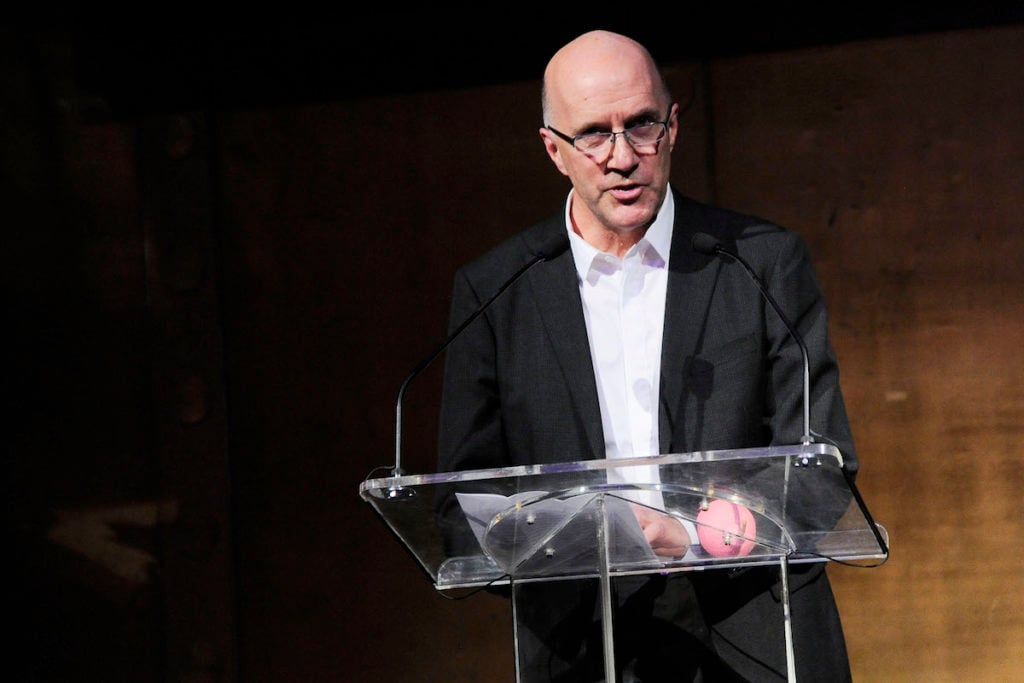
Hal Foster speaking at the Bomb Magazine 31st Anniversary Gala. Image © PatrickMcMullan. Photo courtesy Nicholas Hunt and PatrickMcMullan.com.
On the occasion of his 2018 Mellon Lectures at the National Gallery of Art, the famed art critic talked with artnet News about the development of his ideas and why he is reconsidering the art of the 1950s.
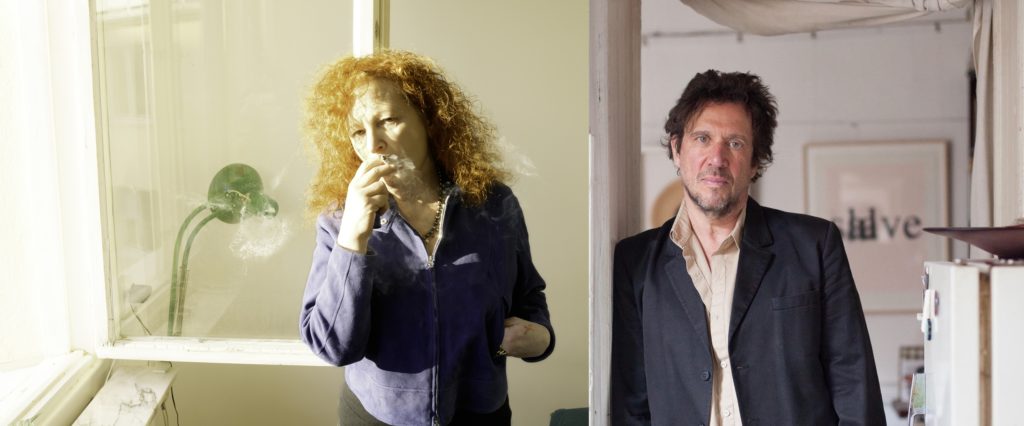
Left: Nan Goldin, Self-portrait smoking, Simon’s house, Stockholm (2013). Courtesy of the artist and Marian Goodman Gallery. Right: Richard Hell. Photo © Rebecca Smeyne.
In one of her most in-depth interviews to date, Nan Goldin explores her evolution from a photographer of 1980s downtown New York to a leading figure in the fight against opioid addiction.
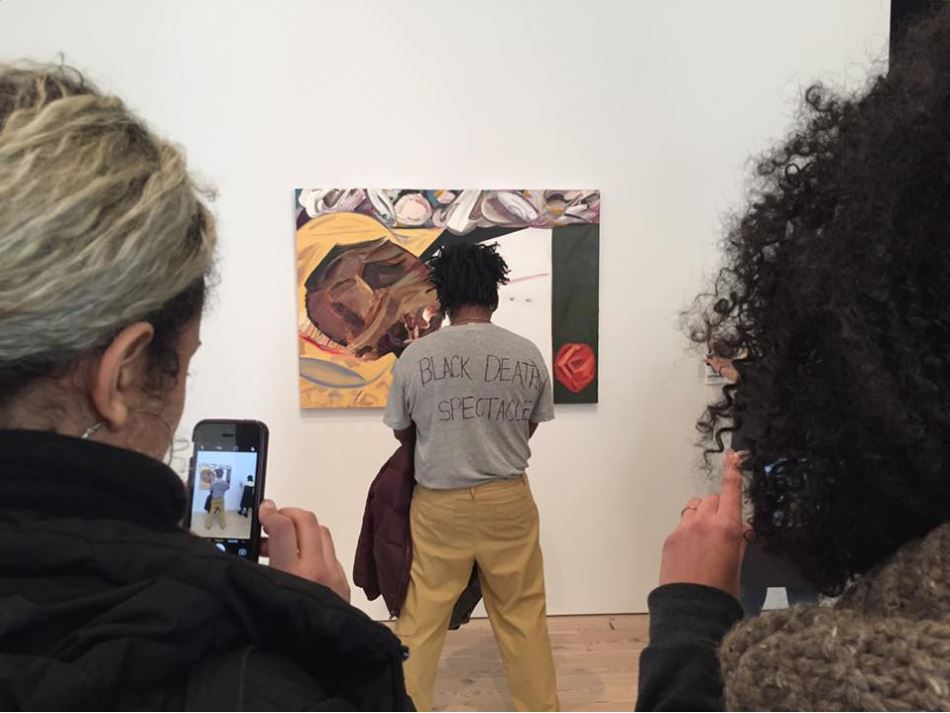
Protesting Dana Schutz at the Whitney. Image via @hei_scott Twitter.
The battle over how to respond to Dana Schutz’s postmortem painting of Emmett Till, the black boy lynched by white supremacists in Mississippi in 1955, forced museums to do some reckoning. And for the first time since the Culture Wars in the 1980s and ‘90s, they need to be prepared to defend every single decision they make.
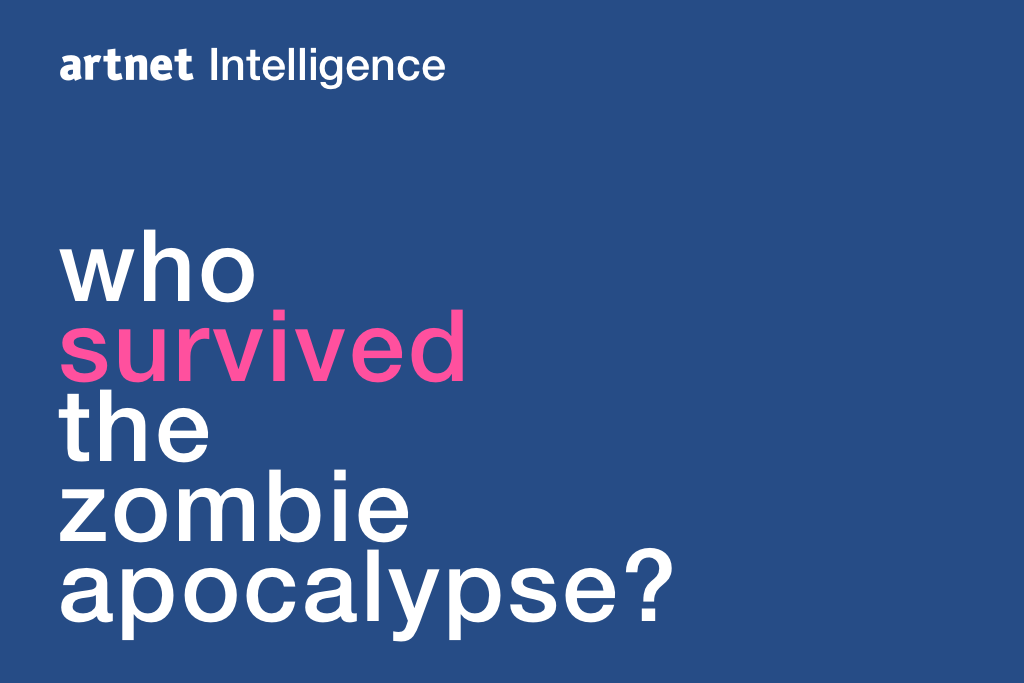
A sneak peek at the front page of our new offering. Graphic by Shannon Pleas.
In our first-ever artnet Intelligence report, we use artnet’s unparalleled market data to examine the development of the art market—and tell you where things are headed.

President Donald J. Trump awards himself the National Medal of the Arts, the nation’s highest honor in arts and letters. Image courtesy Nicholas Kamm/AFP/Getty Images.
Our April Fool’s edition of our Art Industry News digest had real world effects: It inspired at least one guy to take a potted “Art Basil” to an art fair and call it art. No joke.
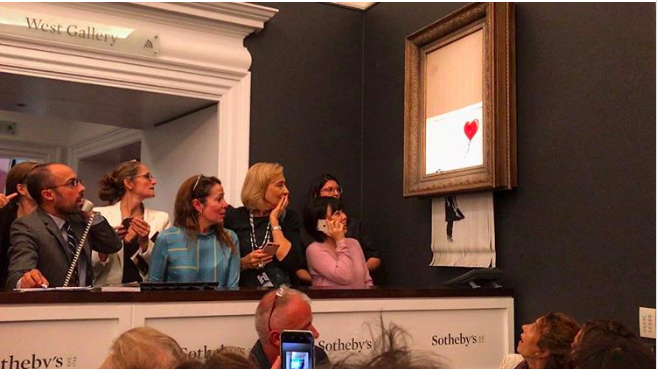
Surprised onlookers react as Banksy’s Girl With a Balloon self-destructs at Sotheby’s.
Banksy fatigue be damned! For those of us who have been reporting on pricey blue chip trophies at high-end auctions, this cheeky stunt took the cake for sheer audacity. The art market “can of worms” it opened up forces us to consider questions of risk, market value, and authenticity.

Circled, Jerry Chun Shing Lee, standing in front of a member of security at the unveiling of Leonardo da Vinci’s Salvator Mundi on October 15, 2017, at the Christie’s showroom in Hong Kong. Photo: Anthony Wallace/AFP/Getty Images.
When news broke that the former CIA officer suspected of leaking classified information to China was a former Christie’s staffer, one of our eagle-eyed reporters had the uncanny feeling she had seen his face somewhere before… .

Charles Willson Peale’s The Peele Family (1771–73), with the family’s signature fruit and peels highlighted. Image courtesy Wikimedia Commons.
It came out over the Easter holiday, so you probably missed it. But this is a fun look at hidden details in historical works. We learned a lot in writing it—sometimes things that chilled us to the bone!
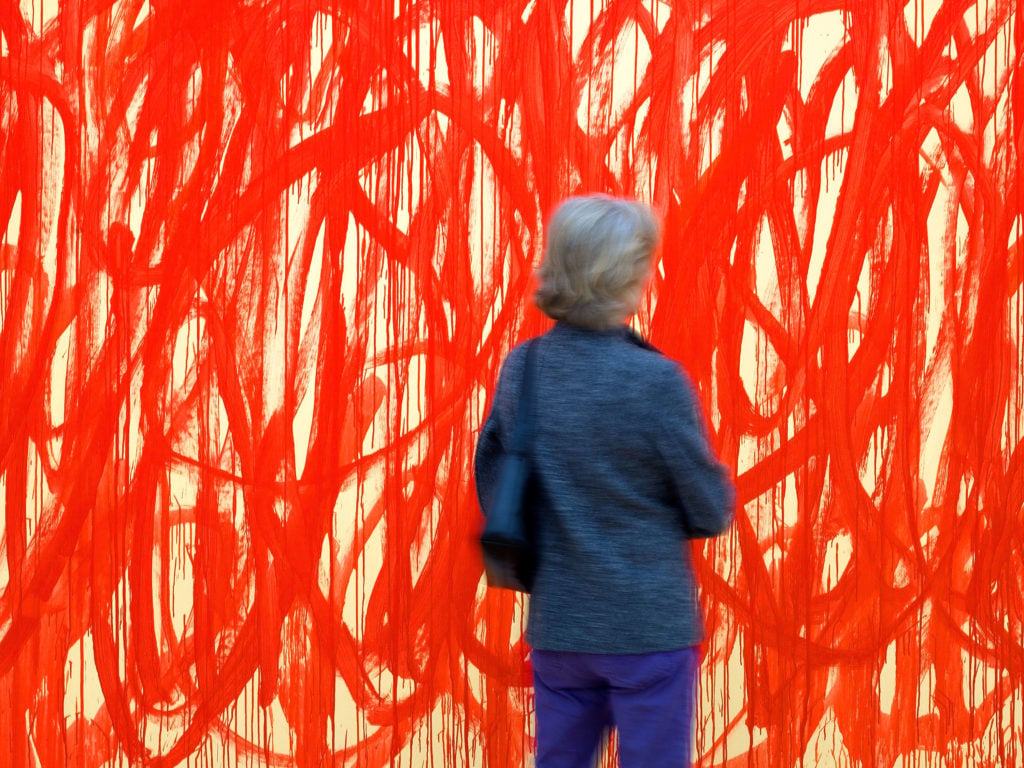
Painting by Cy Twombly at the Brandhorst museum in Munich, Germany. Photo by Johannes Simon/Getty Images.
One job of an artist’s foundation is to guard his or her legacy. But that can make research difficult for outside parties. In this report, we looked at Joshua Rivkin’s recent biography of Cy Twombly—and the author’s claim that the painter’s foundation tried to inhibit his research.
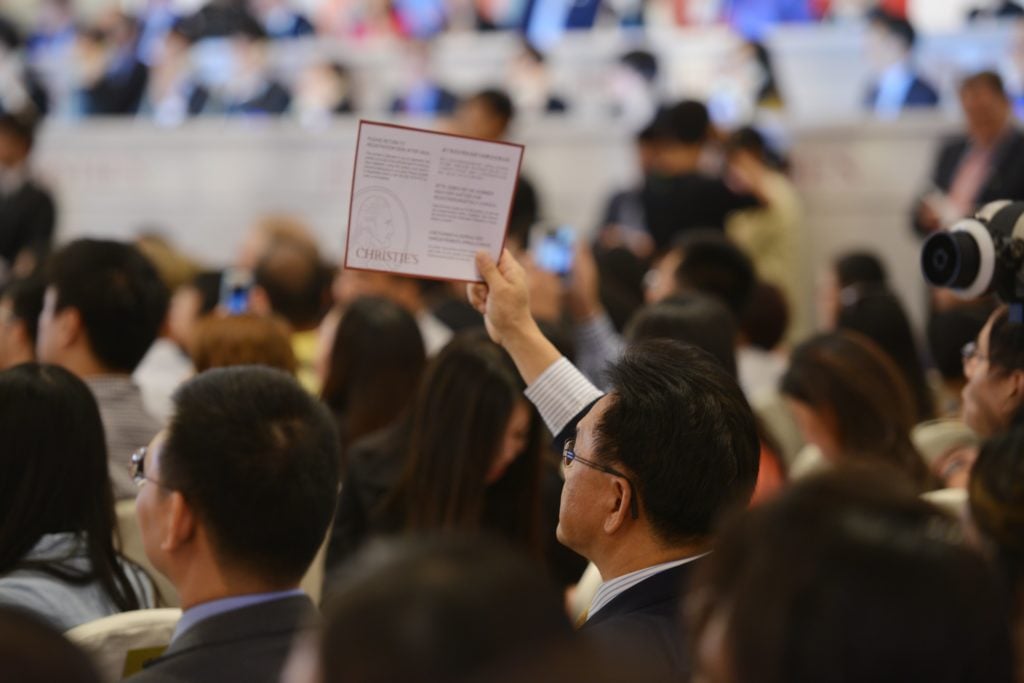
A bidder at Christie’s in Shanghai. Photo: Peter Parks/AFP/Getty Images.
When Christie’s bought a startup firm that promised to help collectors securely store and manage detailed collections information, while also giving them access to extensive auction records, it looked like a coup for the auction house. So why did the initiative dissolve so suddenly?
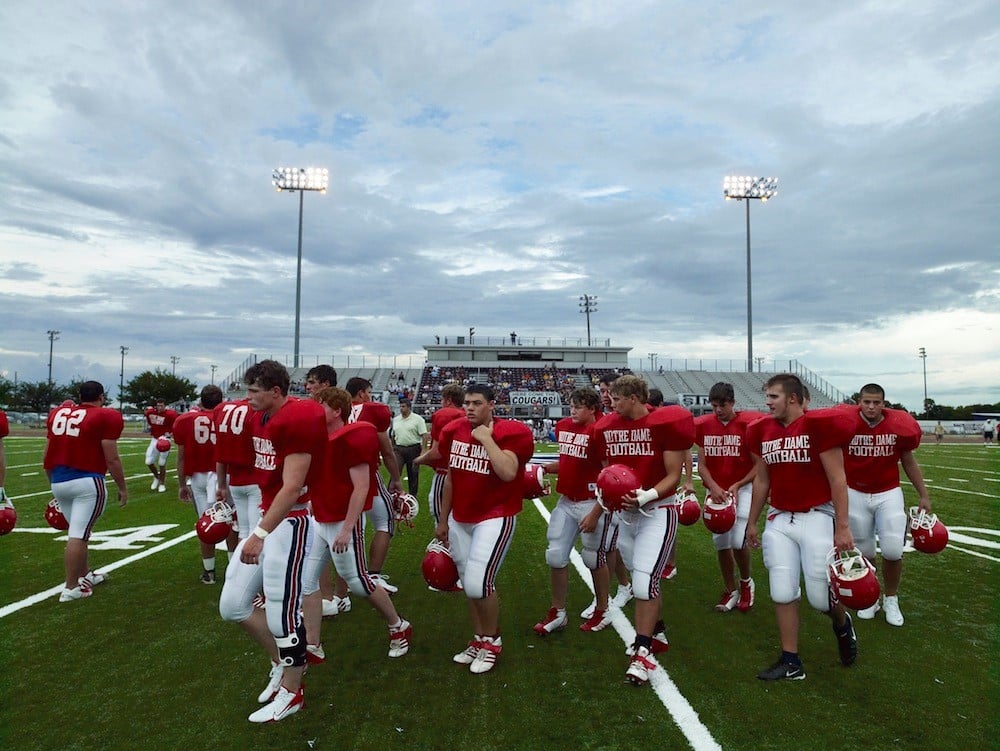
Catherine Opie’s Football Landscape #3 (Notre Dame vs. St. Thomas More, Lafayette, LA (2007). Image: © Catherine Opie. Courtesy Regen Projects, Los Angeles and Lehmann Maupin, New York and Hong Kong.
Every day seems to bring another announcement that a modestly sized gallery has decided to call it quits. On top of that, mega-galleries such as Hauser & Wirth regularly poach artists that smaller dealers have nurtured. Perhaps athletic organization can provide a model for a sustainable path forward.
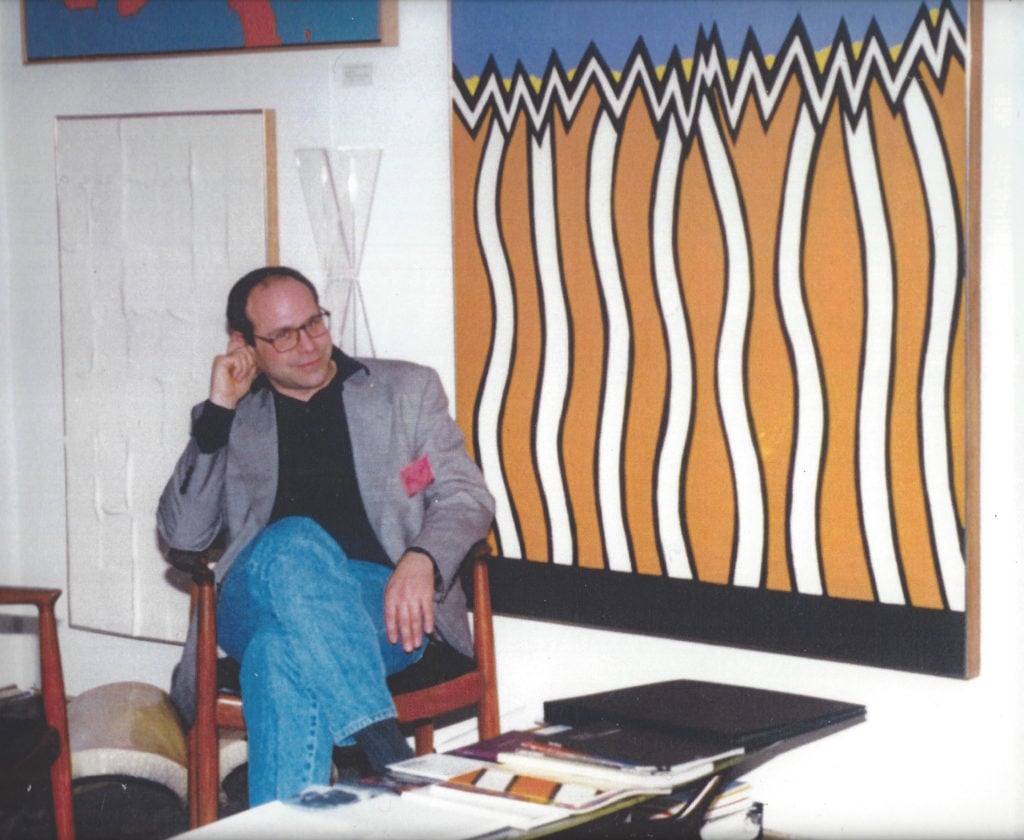
Mitchell Algus, circa 1998, in front of a work by Nicholas Krushenick.
You’ve probably never heard of Mitchell Algus. But this pioneering dealer often showed artists—among them, Barkley Hendricks, Betty Tompkins, Martha Wilson, and Lee Lozano—long before they were famous. So how did Algus manage to stay hidden in plain sight for so long?
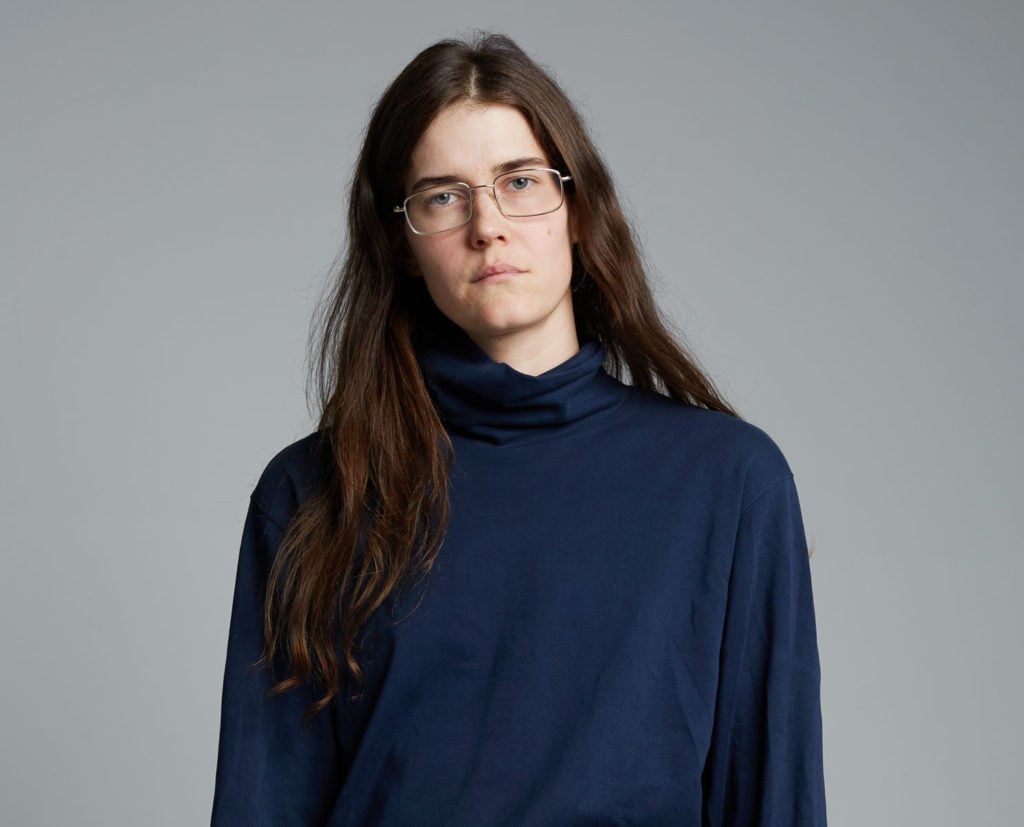
Eliza Douglas. Courtesy of the artist. Photo: Eva Goedel.
This profile of performer and artist Eliza Douglas digs into how this self-effacing American found herself in Germany (free schooling was a big draw), how she met Anne Imhof (whom she had a crush on), and what she hopes people get out of her paintings.
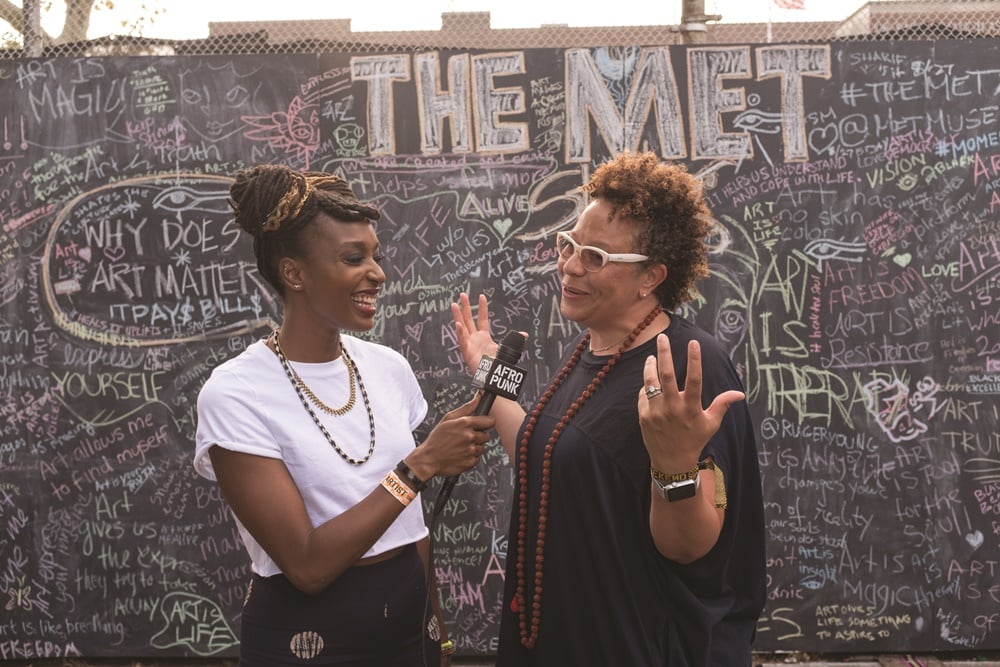
The Met’s public mural prompt ‘Why does art matter?’ during the Afropunk music festival in Brooklyn. Photo by Filip Wolak.
A quote from the assistant executive director of the William R. Kenan Jr. Trust, which is the focus of this story, sums it up best: “We’re not an institution that just focuses on charity. We need to be an institution that focuses on justice.”